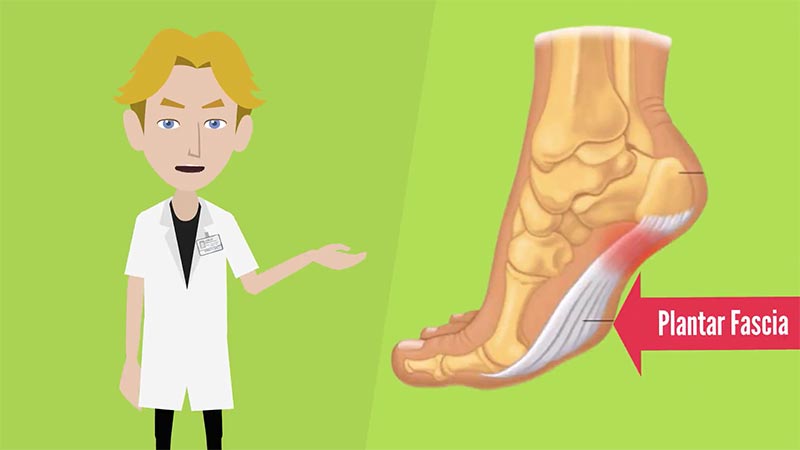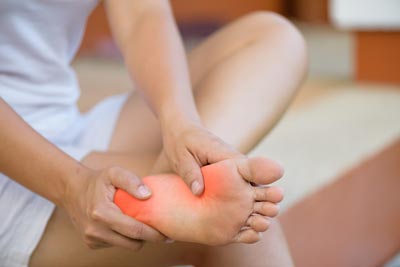Understanding Heel Spur Treatment: Everything You Need to Know
Heel pain is a common issue for many individuals and, unfortunately, it can be quite debilitating. Heel spurs are particularly painful and require specialized treatment to relieve the discomfort. Whether you’re a marketer who needs to better understand heel spur treatment to learn more about your consumers or someone at home trying to manage their own foot pain, we’ve got you covered with everything you need to know. We’ll explain all the potential treatments out there as well as available options that may provide relief from heel spur-related pains.

Heel Spur Treatment
What is a Heel Spur and How Does it Develop
A heel spur is a bony projection that develops on the heel bone, often causing pain and discomfort. These spurs are typically caused by repeated stress on the foot and can occur in people who participate in high-impact activities such as running or those who stand for extended periods. As we age, the connective tissue surrounding our tendons and ligaments can become less flexible, leading to the development of heel spurs. Other contributing factors may include poor posture, obesity, and wearing shoes that do not provide adequate support.
Common Symptoms of Heel Spurs
Heel spurs are a common condition that affect many individuals. These bony growths, which form on the heel bone, often cause pain and discomfort when walking or standing. Some of the most common symptoms of heel spurs include intense pain in the heel, tenderness or swelling in the affected area, and difficulty moving or flexing the foot. In some cases, individuals may also experience a dull ache in the heel or a sensation of heat or warmth in the affected area. While heel spurs can be a frustrating and painful condition to deal with, there are several treatments available to help manage symptoms and improve overall comfort.
Diagnosis of Heel Spurs
Heel spurs are a common foot condition that affects many individuals, especially those who frequently participate in physical activities or spend a lot of time standing. Essentially, heel spurs occur when calcium deposits develop on the underside of the heel bone, leading to pain and discomfort when walking or standing. To properly diagnose a heel spur, healthcare professionals may use imaging tests or physical examinations to assess the area and help determine the appropriate treatment plan. It is crucial to seek medical attention if you suspect you may have a heel spur, as untreated cases can lead to chronic pain and further complications.
Treatment Options for Heel Spurs
Heel spurs, also known as calcaneal spurs, are a painful condition that affects many people. These bony protrusions can develop on the underside of the heel bone, causing intense pain and discomfort with every step. While non-surgical treatment options such as stretching exercises and shoe inserts can help alleviate symptoms, some cases may require more aggressive treatment. Options include corticosteroid injections, shockwave therapy, and surgical removal of the spur. It is important to consult a healthcare provider to determine the best course of action based on individual needs and circumstances.
Prevention Tips to Avoid Heel Spurs
Heel spurs can be quite uncomfortable and are typically caused by excessive strain and stress on the foot. Thankfully, there are several ways to prevent the development of heel spurs. One of the most effective methods is to wear supportive shoes with proper heel cushioning. It’s also a good idea to maintain a healthy weight, as this can reduce pressure on the feet. Engaging in regular exercises that promote flexibility and strength in the feet, such as calf stretches and foot massages, can also help prevent the onset of heel spurs.
When to See a Doctor for Heel Spur Treatment
Heel spurs can be a painful and uncomfortable condition, but when should you seek medical help? If you experience persistent pain in your heel, particularly when you first wake up in the morning or after a period of rest, it is recommended that you see a doctor. While heel spurs may go away on their own, it’s important to get a proper diagnosis to ensure that the pain isn’t being caused by something more serious. Your doctor may recommend a variety of treatments, including physical therapy, stretching exercises, orthotic devices, or even surgery in severe cases. Seeking medical attention sooner rather than later can help alleviate your heel pain and get you back to your daily activities.
In conclusion, heel spurs can be a painful and debilitating foot condition if left untreated. Understanding what a heel spur is, what causes it and the common symptoms to look out for are all important pieces of knowledge that can help in diagnosing and treating the condition. By being proactive with at home treatments like rest, ice and using home orthotics you can provide relief from heel spurs.

Heel Spur Care Treatment
Flagstaff Foot Doctors: Anthony Rosales DPM
https://www.google.com/maps?cid=8835841318590452161
421 N Humphreys St, Flagstaff, AZ 86001, United States
(928) 774-4825
https://flagstafffootandankle.com/
